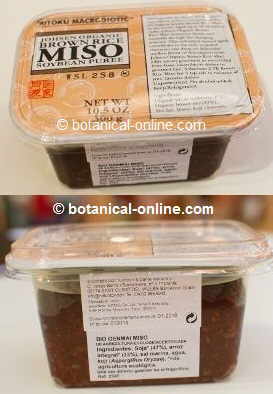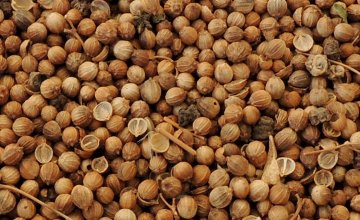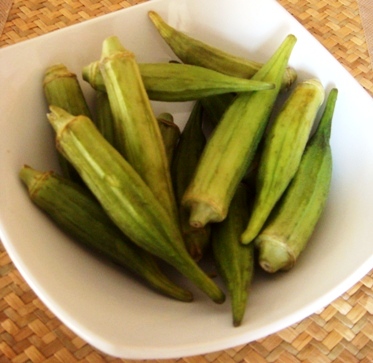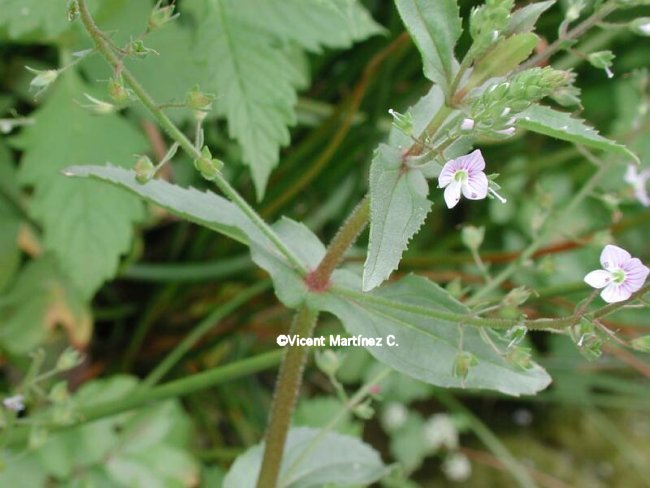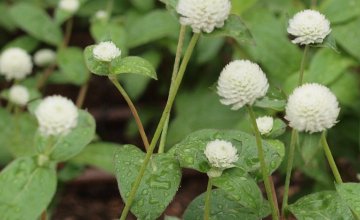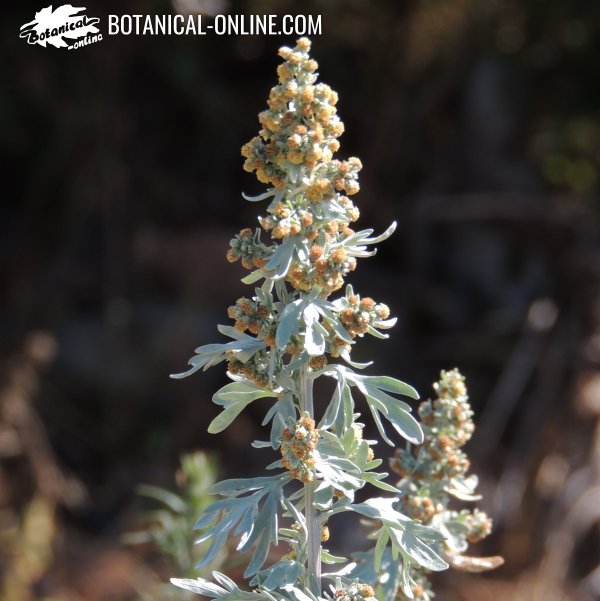Contents
What are peanuts?
Characteristics of peanut plant (Arachis hypogaea)
Peanuts or groundnuts (Arachis hypogaea) are plants of the pea family, a plant family where other food plants belong such as lentils, soybeans and chickpeas.
Although botanically speaking, peanuts are legumes, from a food standpoint, they are considered to belong the group of dry fruits, such as, for example, almonds, hazelnuts or walnuts. The reason for this is because their fruits have not any pulp and their seeds are contained inside a pod that, when mature, becomes dry and hard.
The peanut plant is an annual herb up to 30 to 50 cm with stretched or erect stems. Leaves compound, pinnate, long stalked with four leaflets. Peanut flowers are usually yellow with reddish veins and tubular calyx, clustered in groups of 2 to 6 flowers each.
When flowers at the base of the plant mature, their long floral stems bent towards the ground, penetrating it. Once underground, their fruits (peanuts) mature below ground. This is a unique botanical peculiarity in the plant world. In fact the name of the species “hypogaea” in Greek means “underground”, hence in English peanut is also called groundnut.
Peanut fruits are legumes whose pods, as they mature, become hard and dry. Inside, we can see the seeds (peanuts), surrounded by a reddish papery layer.
They grow in warm places, with plenty of moisture, requiring soft and crumbly permeable soils.
Aspect of the plant with leaves and fruits
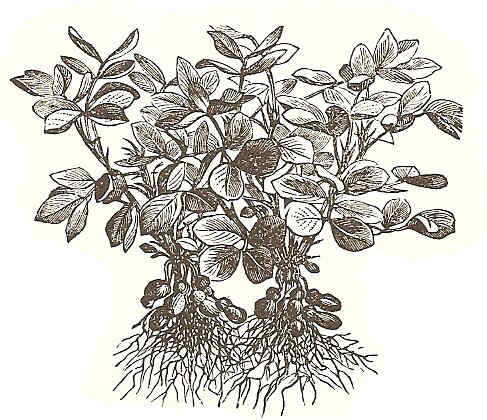
Origin and history of peanuts
Peanuts come from the tropics of South America. Its cultivation began about 8000 or 7000 BC in the Andes of Peru, where they were widely used by the Incas, as the texts coming from the Spanish colonizers tell us. Archaeological remains found in Pachacamac (Peru) confirm its use in this area.
From here, its cultivation spread throughout South America. The Spanish settlers brought the peanut crop to Spain. From this country, it expanded to other parts of Europe and Africa. In Africa the peanut crop has adapted very well. Furthermore, this vegetable is a staple food in this continent.
The Portuguese exported their cultivation to the east, coming to China. Today, China is the world’s largest producer of peanuts, using mainly the varieties introduced by the Portuguese in the seventeenth century and the American missionaries in the nineteenth century.
The main contribution to the peanut crop was carried out after the American Civil War, when George Washington Carver (1864-1943) a botanist from the Tuskegee Institute (Alabama) succeeded in boosting the cultivation of peanuts as an alternative crop for farmers to be self-sufficient. It is famous a newsletter published by the African American scientist that contains 105 recipes made with peanuts. In addition to use it as food, he published a guide containing more than 100 household products made with peanuts (cosmetics, plastics, gasoline, dyes, etc.).
The importance of groundnut oil during this period also grew in Asia and Africa where the markets of these countries could not be supplied by lack of other oils. This led to the creation of new mills to obtain peanut oil and peanut production increased in the growing countries.
Today, the major peanut-producing countries are China, India, USA, Indonesia and Senegal. The U.S. is the largest consumer of peanuts in the world, followed by Africa.
Uses of peanuts
– Plant food: Peanuts are primarily cultivated because of their fruits (peanuts) that are nutritionally very complete.. From them we also make peanut oil.
Peanut oil is an oil used widely in India and China. Is commonly used in Asian cuisine. Most of peanut production in these countries is used for oil production.
It is also very common to make peanut butter or peanut cream, a very common type of preparation in countries like the United States, Canada and the United Kingdom. It is a cream with a very high protein content.
– Medicinal plant: Peanut, besides being nutritious, has well recognized medicinal properties. Its fruits are considered a powerful antioxidant. Peanut oil is used as the basis in many medicinal preparations.
– Fuel: Peanut shells are used as fuel in some countries.
– Soap: The remains of the peanut oil are used in the manufacture of soap.
Peanut varieties
There are four main varieties of peanuts. These are:
Varieties in hot climates:
– Spanish peanut: erect, compact plant. From 2 to 3 peanuts in each fruit. These are small and compact with good flavor, very sweet and good for grilling or for peanut butter. They have lots of oil and protein. A very productive variety.
– Virginia peanut: Trailing plant. 2 peanuts per pod. Large elongated fruit with a little oil. A very productive variety
– Valencia peanut: Bushy plant up to five feet tall. It produces from 2 to four seeds per pod, rich in oil and protein. It is mainly used for the manufacture of butter or as a supplement in the manufacture of chocolate tablets. Very productive variety.
– Peruvian peanut: A variety resulting from the crossing between Virginia and Spanish. The plant has a creeping appearance hence, in English, is known as “runner peanut “. It is primarily used to produce peanut butter.
Varieties of cold weather:
– Early Spanish: It is used to grow in areas of low temperatures. Very productive variety.
![]() More information about peanuts.
More information about peanuts.



